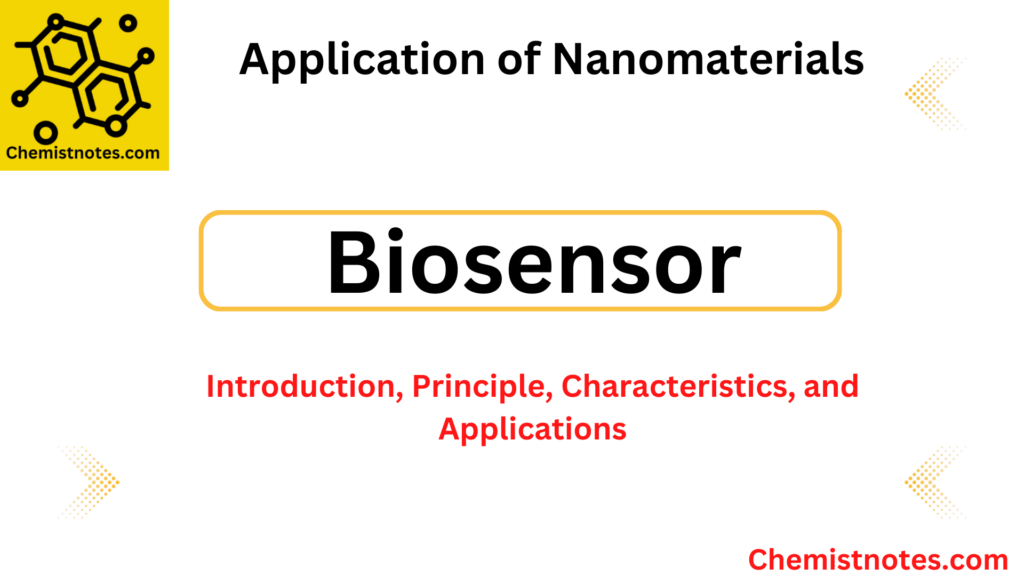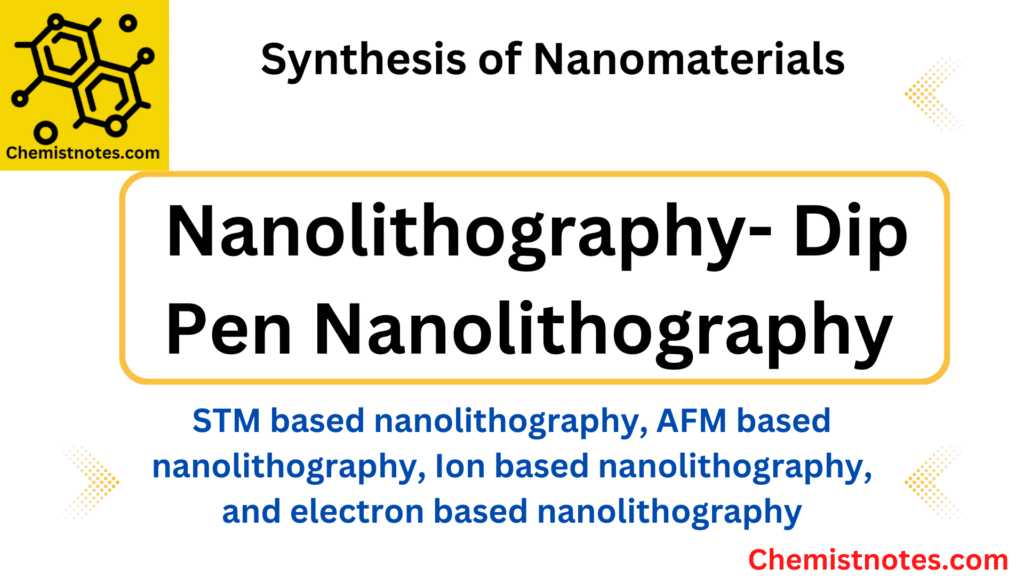Table of Contents
ToggleNanoparticles or nanostructure-based sensors are commonly called nanosensors. Simply, nanosensors are mechanical or chemical sensors that are employed to monitor physical factors like temperature or to identify the presence of chemical species as well as nanoparticles. The nanoparticle-sized sensors i.e. nanosensors have the capability to detect even minute particles. Moreover, these nanosensors possess several advantages compared to the macro or micro scale counterparts as listed below:
- Smaller size
- Lower cost
- Increased sensitivity
- Mass production
- Low energy consumption
- Higher level of integration
- Possibility of multiplexing and miniaturization of analytical devices and systems, etc.
Depending on the sensing application, nanoscale sensors can be categorized as physical, chemical, or biological nanosensors. Moreover, nanoscale sensors can be categorized in a manner similar to that of conventional sensors based on the amount of energy they transduce. Some of the various nanosensors are:
| S.N. | Type of Nanosensors | Measured property |
| 1. | Mechanical | Size, velocity, acceleration, mass flow, force, torque, pressure, acoustic wave, piezoelectric, strain, stress |
| 2. | Thermal | Temperature, specific heat, entropy, heat flow, flux |
| 3. | Electrical | Voltage, current, resistance, impedance, inductance, capacitance, dielectric constant, polarization, electric field, frequency, dipole moment |
| 4. | Magnetic | Field strength, flux density, magnetic moment, permeability |
| 5. | Optical | Intensity, frequency, phase, wavelength, polarization, reflectance, transmittance, refractive index |
| 6. | Chemical | Composition, concentration, reaction rate, pH, oxidation/ reduction potential |
Particularly, nanosensors can be categorized based on the nanostructures used, such as embedded nanostructures, nanowires, nanoparticles, nanocomposites, quantum dots, etc. Although there are many different types of sensors, no one sensor can reliably sense all relevant parameters in all possible scenarios. As a result, there is currently interest in developing sensor arrays to integrate several properties in various scenarios.
Carbon nanotube nanosensors
Carbon nanotubes (CNTs) are cylindrical structured allotropes of carbon. They are one of the widely studied nanostructures for their application in electronics, optics, and other areas of material science. For the detection of various compounds, including biomolecules and gas molecules, carbon nanotube-based sensors have been widely used. The primary basis for the detection method is the alteration in conductance of semiconducting nanotubes after exposure to these compounds. CNTs are the perfect material for a variety of sensing applications because of their nanometric size, high aspect ratio, huge surface area, and distinctive thermal electrical properties.
In addition to being a substance and a platform for detection, carbon nanotubes can also be employed as a component for signal amplification by numerous loadings of detecting molecules. Either carbon nanotubes by themselves or carbon nanotubes modified with other materials or polymer carbon nanotube composites, carbon nanotube gold nanoparticle composites are used for sensing purposes. Carbon nanotubes have been successfully applied for the determination of NH3, NO2, CH4, H2O, H2, CO, H2S, and O2. The unique chemical, mechanical, and electronic properties of carbon nanotubes have found their application in electronic field emission sources, scanning probes, actuators, and nanoelectronic devices.
Nanowire sensors
Nanowires are 1D structures that may be formed from a number of materials and can range in size from a few nanometers in diameter to several microns in length. They have unique electrical and optical characteristics that can be used to create ultrasensitive nanosensors for sensing applications. For biosensors, molecular detection, nano-connectors, and gas sensors, sensors based on nanowires of diverse materials have been reported.
Field effect is often the method used for inorganic nanowire sensors, and it is transduced via FET. The voltage of an applied gate can change the conductance of a nanowire FET. A nanowire’s surface molecules and proteins have a substantial impact on its conductivity. High throughput screening for diagnostics and drug discovery is made possible by nanowire sensors customized with various antibody receptors that can selectively detect numerous species simultaneously.
Since binding to a nanowire’s surface causes a depletion or accumulation of carriers in the structure’s “bulk,” which has a diameter of only a few nanometers, FET sensors based on nanowires are more sensitive than planar FET sensors. This increased sensitivity may allow for the detection of single molecules.
One advantage of nanowires is that their properties can be well controlled during their synthesis.
Polymeric nanofibre and nanocomposite-based sensor
In contrast to other materials and microfibers, polymeric nanofibres have exceptional mechanical qualities, a high surface-to-volume ratio, and flexibility in surface functions. They are a wonderful choice for a variety of sensing applications and a strong structural material because of their characteristics. The nanofibres have been used for a variety of purposes, including implant coating, tissue scaffolding, and wound dressing.
Nanocomposites possess enormous potential due to the added advantages of nanofibers as well as matrix nanomaterials. Nanocomposite materials, as opposed to monolithic ones, might offer greater mechanical strength and structural qualities. These nanocomposites also differ from their micro-composite counterparts in terms of a few other optical characteristics. Microcomposites could be opaque or non-transparent due to the scattering of light if there is a difference in the refractive index between the nanofiber and the matrix. But this problem can be solved in nanocomposites as they approach a diameter significantly smaller than the wavelength of light.
Some of the other applications include electromagnetic shielding, tissue template, liquid crystal device, medical prosthetics, filtration, cosmetics, protective clothing, drug delivery, and pharmaceutical composition.
Application of nanosensors
There are numerous areas where nanosensors and nano-enabled sensors are used, including transportation, communications, construction and buildings, healthcare, safety, and national security, which includes both military operations and home defense. Likewise, the chemical, optical, medicinal, electronics industries, and food, can all benefit from using nanosensors. Particularly exciting uses for nanosensors include chemical detection, food and water quality monitoring, and medical diagnostic applications.
Nanosensors Video
References
C.C. Bueno, P.S. Garcia, C. Steffens, D.K. Deda, F. de Lima Leite, 5 – Nanosensors, In Micro and Nano Technologies, Nanoscience and its Applications, William Andrew Publishing, 2017, Pages 121-153,
ISBN 9780323497800, https://doi.org/10.1016/B978-0-323-49780-0.00005-3.






